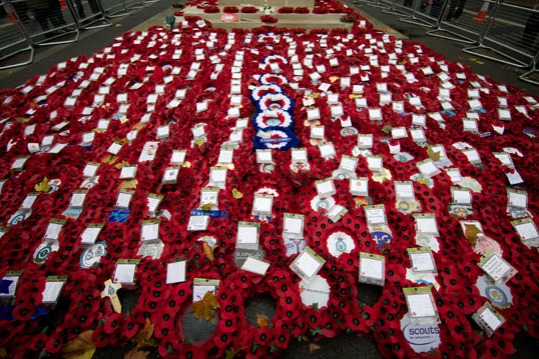Chinese designs with French twist

|
Chinese fashion designer Elysee Yang says her clothes have a French appearance and a London heart. Provided to China Daily |
Studying fashion in Paris has helped elysee yang break through in China
In a 200-square meter design studio located in Beijing's Central Business District, sounds of a sewing machine rumble from the tailor's office. Handmade clothes made of bold colors and patterns surround the fashion designer Yang Guanhua in her drawing room.
In the center of the room hangs a vintage crystal chandelier, which was shipped from her husband's grandfather's home in France, a reminder of her time abroad.
The Beijing-born 37-year-old studied fashion design and fabric design at L'institut Superieur des Arts Appliques in Paris. The elegance and romance that surround France are reflected in her designs. However, if you look beyond the obvious, a hint of a punk and avant-garde from London can be seen.
"My clothes have a French appearance and a London heart," Yang says.
This is apparent in the European vintage collection at last year's Shanghai Fashion Week. She drew inspiration from her favorite French actress, Eva Green, who starred in the independent film Cracks. The 2009 movie takes place at a British boarding school in the 1930s.
"I have seen the movie 10 times. I was so obsessed by the scenes, colors, hair styles and scarves in the film that I came up with an idea to use these elements in my show," says Yang, better known as Elysee Yang.
She returned to China in 2005 because she wanted to help Chinese designers find their own voice in the fashion world.
"The most popular and daily clothes we are wearing today originate from Western countries, and it is a road full of thorns for us to establish our own style and become international," she says.
She says she is impressed by the techniques of Chinese tailors, especially when it comes to embroidery. But her issue is with Chinese fashion designers' lack of creativity in terms of design.
"When I was in Paris, the most comments I heard about Chinese fashion designers were about qipao," Yang says. The qipao is a traditional Chinese dress that is long and fits snugly on the body.
"In their opinion, Chinese fashion and design is all about qipao, I want to do something to change this."
Sometimes, her clients ask her to design a qipao, but she never accepts the request.
"Qipao is a very fancy feminine clothing for women, but I just don't like the body-hugging one piece."
Beside her feelings about the design culture in her native land, she brought back what she had learned in France in the hopes of helping establish Chinese designers' own attitudes and tear down the perspective about Chinese designers seen from the outside world. Yang returned to Beijing with two established lines: Elysee Yang, which is considered haute couture, and the ready-to-wear line ZemoElysee.
And word seems to be getting out. Many of her customers are from the United States, German, Switzerland and France. Two young women from New York visited her store last year carrying a brochure advertising the store. They told Yang that her brand was named in the brochure as one of China's luxury brands.
"One of the girls bought several Audrey Hepburn-style skirts featuring the 1950s choke waist," Yang says.
Yang has more than 1,000 steadfast VIP clients around the country. Her customers have broadened beyond the 35-year-old category.
Young women can now afford her clothes, and women older than 35 are no longer limited to wearing clothes that are regarded as suitable for their age. Some of them also want to try something new or follow trendy women.
The Elysee Yang line starts at 1,600 yuan ($254, 192 euros) for her shirts, overcoats cost more than 3,000 yuan and evening dresses range from 10,000 yuan to 50,000 yuan.
"The middle class in the country is enlarging. Many of them are keeping in shape and have the confidence to wear different clothes. Sometimes, they also need to dress in unique outfits to attend various social activities," she says.
She points out that although the high-end haute couture has potential in China, many Chinese people consider haute couture, accented with pearls and crystal, expensive. Also, many women haven't learned when or where to wear high-fashion designs.
Yang recently attended a casual, afternoon tea party in leisure wear. She was surprised to find some young women walking into the cafe dressed in low-cut evening gowns with long trails.
"They were showing their respect to the party and the host, but I don't think it was suitable attire," she says with a smile.
For Yang, fashion means standing out from the crowd and presenting designs from the soul, not following others or even following the rules of design. She likes to mix and match fabrics she handpicks by roaming through the shops in Paris. Yang typically goes with her husband to France twice a year for three weeks at a time.
"I can get the leftover materials of Dior and Channel in Paris. The prints, patterns and textures are more fascinating and trendy. My suitcases are always full of fabric, weighing 60 kg, and I have to pay excess baggage charge every time," she says.
She learned a lot about fashion while she was a student in Paris. At least four boutiques located in Montmartre and Bastille couldn't wait to get their hands on her clothes. Her graduate works that had been worn by models on stage, some even with chalk and stains on them, sold out.
"Most of my clothes were European-style, one-piece skirts, and they were sold at an average price of 100 euros. At that time, the revenue covered all of my living expenses and travel fees," Yang says.
Although Yang didn't make many clothes, it was a good market to test her works. She learned which styles were more popular, and acceptable price points. The popularity of her clothes among the locals gave her the confidence to turn her beloved designs into a business.
Although she spends a lot of her time running her business, she still considers herself an artist.
Yang wakes up early every morning. After reading her favorite Western novels, such as William Makepeace Thackeray's Vanity Fair or something by Guy de Maupassant, she wanders Beijing's streets or shopping malls. Most days are then spent in her studio meeting clients or in a cafe sketching out new designs.
Her daily outfits are similar to the one she had on in the office: a dark blue, cotton jacket, white T-shirt and light blue jeans. But she was planning on changing into a new, red evening dress she designed and accessorizing it with a copper-colored Indian headdress to attend an evening party.
Just returning from India for a monthlong spiritual journey, Yang is contemplating designing a pure white collection. She says she thinks women should be beautiful while practicing yoga or any similar type of exercise.
For now, she is satisfied with designing haute couture, but is considering opening retail stores to make her ready-to-wear line more easily available.
"I am a perfectionist. Each item from the cheaper, ready-to-wear line is designed by me and made by our own tailors. It took up too much time and energy, and I just want to focus on the design. I feel more relaxed with the work of high-end haute couture," she says.
yaojing@chinadaily.com.cn
Today's Top News
- Xi calls for promoting volunteer spirit to serve national rejuvenation
- Xi chairs CPC meeting to review report on central discipline inspection
- Reunification will only make Taiwan better
- Outline of Xi's thought on strengthening military published
- Targeted action plan to unleash consumption momentum
- Separatist plans of Lai slammed































